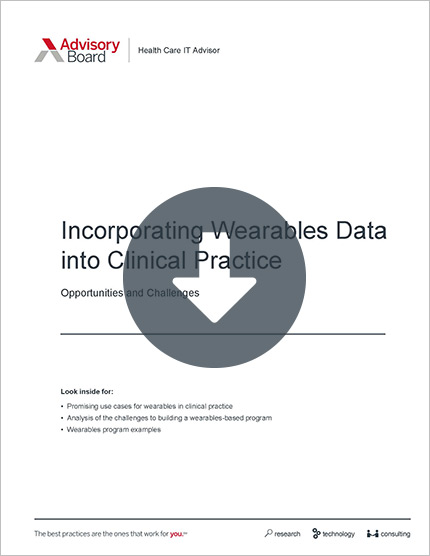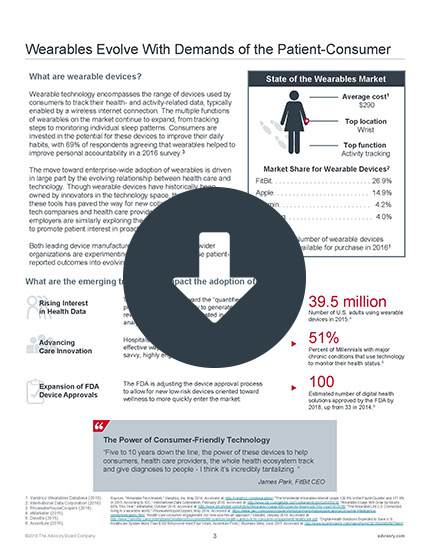Auto logout in seconds.
Continue LogoutEditor's note: This popular story from the Daily Briefing's archives was republished on May 26, 2020.
Fitness trackers are programmed to encourage users to reach 10,000 steps per day, but, when it comes to improving longevity, there may be "nothing magical about the number" after all, according to a study published in JAMA Internal Medicine on Wednesday.
The 10,000 steps goal's origin
According to I-Min Lee, a researcher at Brigham and Women's Hospital, "The original basis of the number was not scientifically determined."
Rather, the 10,000 steps goal resulted from a "successful Japanese marketing campaign" launched in the mid-1960s by sports health company Yamasa Tokei Keiki for what is believed to be the first wearable step counter. The device's name, manpo-kei, translates to "10,000-step meter."
But that number was not grounded in science, according David Bassett, head of kinesiology, recreation, and sports studies at the University of Tennessee. "They just felt that was a number that was indicative of an active lifestyle," Bassett said.
Maybe 4,000 steps will cut it, study shows
To find out how many steps women have to take per day to maintain good health and longevity, Lee and her colleagues gave wearable devices to 16,741 older women. The women, who were an average age of 72, wore the devices as they went about daily activities for seven days between 2011 and 2015.
Researchers observed the women's health and longevity four years later, between 2018 and 2019.
The results suggested that the "magic" number of steps per day may be closer to 7,500—or even 4,000.
According to the study, participants who walked about 4,400 steps per day on average were 40% less likely to die during the four-year follow-up period compared with the "least active" women, who took 2,700 steps per day.
In addition, the researchers found that the benefits of walking "maxed out" around 7,500 steps, meaning that participants who walked more than 7,500 steps per day did not see an additional increase in longevity, Aubrey reports.
Study proves there are benefits to 'light activity'
The results suggest that "there's more benefit to light activity than we were previously thinking there might be," according to Kathleen Janz, a researcher who studies how physical activity affects health at the University of Iowa.
However, the researchers did note that they only observed how walking affects longevity, not other health outcomes, such as memory, cognitive function, or quality of life.
Similarly, Janz explained that the study only measured the amount of walking the women were doing each day and did not take into account other forms of exercise, such as biking or swimming. "It's safe to assume some women in the study were doing these other things that can influence health as well," Aubrey writes.
Overall, Janz said the results prove that increased longevity is attainable through "light activity," meaning that women who are looking to increase their activity level may not "need to go to the gym or invest in a personal trainer or exercise equipment," which is "really good news for women who many not be particularly active" (Aubrey, "Shots," NPR, 5/29).
Advisory Board's take

Peter Kilbridge, Senior Research Director and Sophie Ranen, Analyst, Health Care IT Advisor
While several aspects of wearable technology—like the myth of 10,000 steps—might be more marketing hype than carefully researched practice, that doesn't mean that providers should overlook the enormous potential of wearables.
According to a 2018 survey by Accenture, consumer use of wearables has more than tripled since 2014. And the number of companies offering wearable products has also shot up—increasing the data captured from simple metrics like steps, sleep and heart rate, to more complex measures like acceleration, altitude, glucose levels, respiration rate, temperature, and hydration.
So how can your organization benefit from the rise of wearables? Here are two initial ways:
“These patients want a provider who will track this data”
- Boost patient engagement and connect to new patients. Wearables offer a new avenue for providers to connect with patients and increase the number of touchpoints between them (often building greater patient loyalty). Because the type of patients who most often use wearables, "quantified selfers," are typically healthy and active, they are often not as engaged with the health care system. But many recent studies show that these patients are both willing to share their health data with their physician and want a provider who will track this data—offering a new way to engage them.
- Avoid costly chronic care episodes. Many organizations have begun incorporating wearables into care management programs for high-risk or chronic care patients. Integrating wearables not only helps patients track their own health, but also allows them to share this data—giving providers a more comprehensive view of patients than traditionally possible. This is particularly valuable in-between visits, where the data tracked can help to customize care plans and allow providers to potentially intervene if the patient goes off-track.
If your organization is interested in wearables, our research has found that there are three top questions you should consider first:
- Do you have a data management system to turn the large amount of wearable-generated data into actionable information?
- Do you know the HIPAA security obligations that accompany the devices your patients are using?
- How will your wearable strategy compliment your existing clinical programs and tap into the same incentives that you already use to keep patients healthy?
For our insights into how you may want to answer these questions, as well as a deep dive into the main opportunities and challenges that wearables programs face, download our new research report on Incorporating Wearables Data into Clinical Practice.
Your telehealth cheat sheet on wearables
Wearable technology encompasses the range of devices used by consumers to track their health- and activity-related data. As the multiple functions of wearables on the market continue to expand, consumers are becoming more invested in the potential for these devices to improve their daily habits. Wearable technology can help to facilitate patient activation and improve clinical outcomes.
The cheat sheet details how rising interest in health data, advancing care innovation, and expansion of FDA device approvals has impacted the adoption of wearables.
Don't miss out on the latest Advisory Board insights
Create your free account to access 1 resource, including the latest research and webinars.
Want access without creating an account?
You have 1 free members-only resource remaining this month.
1 free members-only resources remaining
1 free members-only resources remaining
You've reached your limit of free insights
Become a member to access all of Advisory Board's resources, events, and experts
Never miss out on the latest innovative health care content tailored to you.
Benefits include:
You've reached your limit of free insights
Become a member to access all of Advisory Board's resources, events, and experts
Never miss out on the latest innovative health care content tailored to you.
Benefits include:
This content is available through your Curated Research partnership with Advisory Board. Click on ‘view this resource’ to read the full piece
Email ask@advisory.com to learn more
Click on ‘Become a Member’ to learn about the benefits of a Full-Access partnership with Advisory Board
Never miss out on the latest innovative health care content tailored to you.
Benefits Include:
This is for members only. Learn more.
Click on ‘Become a Member’ to learn about the benefits of a Full-Access partnership with Advisory Board
Never miss out on the latest innovative health care content tailored to you.


